How To Draw A Logic Puzzle Grid
If you are looking to use Logic Puzzles in your D&D game, than await no further. I've created thousands of puzzles for Dungeons & Dragons. And logic puzzles are my favourite for versatility and engaging all of the players in your D&D game.
So how do you create a logic puzzle for D&D? There are ii means to create a logic puzzle for your Dungeons & Dragons game. The showtime, is for DMs who want to create a logic puzzle on the fly, without any prep work at all. The second, is for DMS who adopt to create a more elaborate logic puzzle that becomes an integral part of your campaign earth.
For each way, I've created a stride-by-pace guide. So let'due south dive right in!
D&D Logic Puzzles on the Fly
There are many dissimilar types of logic puzzles yous can use for your D&D game, ranging from simple to extremely complex.
For Dungeons & Dragons I recommend using logic puzzles that aren't too difficult. This way, a puzzle becomes a short fun challenge instead of something that takes the party hours to solve, or worse, go stuck on.
It's meliorate to introduce a couple of brusque puzzles throughout the story, than focus on one large logic puzzle. Using easier puzzles also makes them a lot easier to create on the fly. Here are the steps to creating a logic puzzle during your gaming session.
Step 1. Create a D&D Logic Puzzle Grid
Start out by creating a seven by seven logic grid. Write the numbers 1 to 7 on 1 axis and the characters A to G alphabetically on the other axis. Do this behind your DM screen so your players tin can't see. 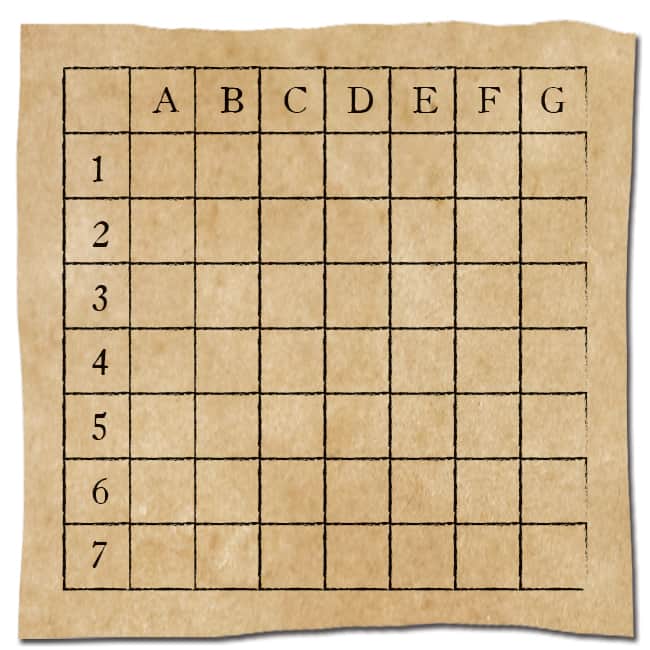
Step two. Make the Logic Puzzle Relevant to the D&D Story
Great D&D puzzles are immersive and make sense in the globe of our heroes. And logic puzzles are especially easy to integrate. Here'due south how you do that:
Say: 7 variables…. in the right lodge to….
For instance:
- Seven symbols must be touched in the correct society to open up the portal.
- Seven herbs must exist added to the cauldron in the right order to mix the potion.
- Seven instructions are to be followed in the correct lodge to forge an Ironheart weapon.
- Vii nobles are to exist seated in the correct guild to avert a firm-war.
You can change the number of variables (and adjust your logic grid appropriately) but I've institute that seven makes for a fun challenge.
Look at the situation your PCs notice themselves in. Enquire yourself: Where are the PCs trying to go? Or: What information are they trying to obtain?
Use the logic puzzle every bit an obstruction PCs must solve in order to accomplish their goals. This can be a literal obstacle such as a puzzle on a portal or locked book that must be opened. Merely information technology tin can also exist information, such every bit finding out the correct social club to seat nobles.
Let's use the example of the nobles that must exist seated in the correct order. There is a peachy banquet and the PCs are in charge of seating. It is imperative that noble couples are seated in the right lodge from the king who sits at the head of the tabular array. Political tensions are running high and one mistake could gear up of a conflict that might descend into an all out state of war.
Give each variable (noble couple) a name that starts with a letter of the alphabet on your logic grid. For instance:
A = Lady and Sir Avernus
B = Lady and Sir Bornheart
C = Lady and Sir Cerillo
D = Lady and Sir Dawncatcher
E = Lady and Sir Estoria
F = Lady and Sir Frauwlich
Grand = Lady and Sir Gregoria
Just utilise the first proper name that comes to mind or enquire players to come up with names. If you already accept names of NPCs that don't fit the alphabetical model apply those in the logic grid instead.
Step three. Create Clues For Your D&D Logic Puzzle
Normally, when preparing a D&D logic grid the DM creates a puzzle ahead of time. But with the on the fly method, you lot create the puzzle clues while players are trying to solve it.
Clues are logical statements such as: "Firm Estoria sits in fifth identify."
Histrion tin find clues through:
- Investigation: According to custom house Estoria e'er sits in 5th place from the Rex.
- Divination: In a flash you run into house Bornheart sitting next to House Avernus.
- NPCs: I've served House Gregoria for many years and they ever sit either showtime or concluding in line.
When players go hunting for clues, just commencement out with one statement such as: "House Estoria sits in fifth identify."
Write your statement downwards in using the variables. This statement is simply: East = 5th.
Next, fill out your ain logic grid. If Estoria is in 5th place, than none of the other houses can be in 5th place. Cross those out. And Estoria can't be in some other place. Cross those out as well.
This way, you'll already have a partly filled out logic filigree. From there, information technology's easy to think of a second statement: House Cerillo never sits besides house Estoria. That means C is not fourth or 6th. Simply cross those out and create the next statement.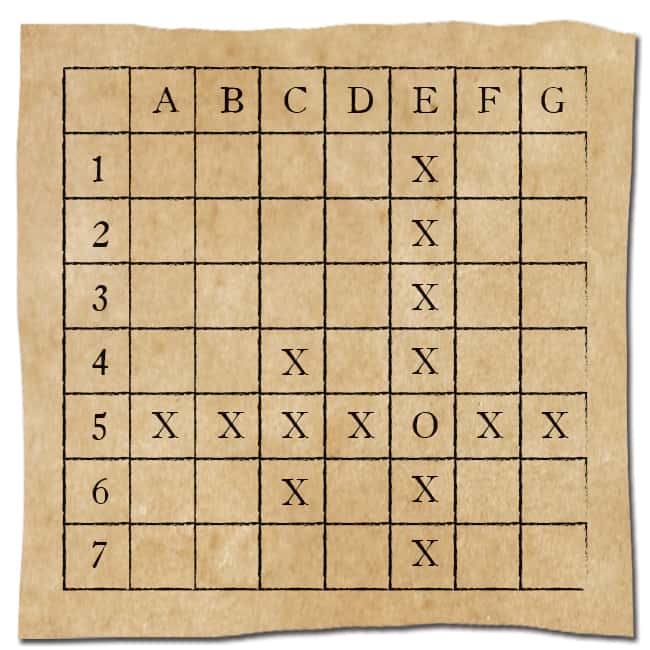
While PCs are decorated finding each of the clues using their abilities and rolling to see if they are successful, yous can come up up with the side by side statement. It actually just takes a 2nd. Just make sure you write downwardly your statements and be sure to cross out your logic grid.
To the players it will seem like you had idea out the logic puzzle in advance, while y'all're actually using the filigree to see which selection are left.
A completed filigree with all the clues would look like this:
- Business firm Estoria sits in fifth place.
- House Cerillo never sits besides business firm Estoria.
- Firm Avernus is either the first or the last in line.
- House Cerillo sits closer to the king than firm Avernus.
- House Bornheart sits side by side to firm Avernus.
- House Gregoria is either the first or the concluding in line.
- There must exist at to the lowest degree two seats between house gregoria and business firm Dawnwatcher.
- Firm Dawnwatcher never sits too house Cerillo.
That'due south it for the on-the-fly D&D logic puzzle. I recommend you attempt to create at least ane of these puzzles without players present before using them in a game. But one time you've practiced them, they are actually easy to integrate and will look differently to the players every time.
Elaborate D&D Logic Puzzles
We've looked at creating D&D Logic Puzzles on the wing. Now permit's look at how to create an elaborate logic puzzle that becomes fundamental part of your campaign world.
Elaborate logic puzzles differ from on the fly puzzles because:
- They grab the players' attention through immersive artwork.
- They give players objects to play effectually with, again, creating a more than immersive experience.
- They facilitate teamwork; peculiarly if you give each player a role of the logic puzzle and key pieces.
- They are so integrated into your game arrangement that they become office of the D&D campaign world and its mechanics.
Permit's expect at an example first. For this example, I'm using Potion Puzzles which I've created for my webstore. Information technology'southward a set of 45 logic puzzles for tabletops and virtual tabletops that can exist added to whatsoever campaign that uses magic.
Next, we'll go into the steps you can accept to create your own elaborate logic puzzle.
D&D Potion Logic Puzzles
Potion brewing is an aboriginal fine art practiced past witches, druids, priests and wizards alike. It is one of the near powerful branches of magic for within it lie non only the secrets to creating potions, but the creation of all magic items.
Anyone who owns a cauldron, uncovers the clandestine recipes, and obtains the right ingredients tin mash a magic potion. But the secrets to recipes are closely guarded and learning the clues to uncovering them is no small feat.
When PCs manage to notice the clues to a recipe, they must solve a puzzle to create the correct formula. Only then is the recipe complete. Next, players must find the ingredients to brew the potion. Potions are always created from a combination of four dissimilar plants and each establish must be prepared in a different way. Twelve plants with magic properties tin can exist used in this style.
The steps to brewing a potion are:
- The DM chooses a blazon of potion and magical effect.
- Observe the ingredients.
- Find the clues.
- Discover the recipe.
- Mash the potion.
i. Types of Potions and Magic Furnishings
Although the craft of brewing is usually associated with potion making, players tin also create inks, oils, perfumes, dyes and polishes. Each substance has its ain unique effects.
| Potions | The nearly common use of brewing is the creation of magical potions. Potions can exist used by anyone, but simply permit a single use. |
| Inks | Magical inks are used to scribe scrolls and create tattoos which fade later ane use. |
| Oils | Magical oils are used to care for wood and leather which imbues them with magic. Magic items created this way tin exist used fifty times before the magic runs out. Oils must contain at to the lowest degree one uncommon or rare ingredient. |
| Perfumes | Magical perfumes imbue the recipient with their magic. A bottle of perfume can exist used l times earlier it runs out. Perfumes must comprise at least 1 uncommon or rare ingredient. |
| Dyes | Magical dyes color cloth and threads which imbues them with permanent magic. Dyes must at least contain one rare ingredient. |
| Polishes | Polishes are used to care for metal which imbues them with permanent magic. Polishes must contain at least i rare ingredient. |
The DM decides which magical effect a potion bestows. You could determine a recipe yields a love potion, that a dye makes textile invisible or that an oil creates a magic wand. It is completely up to you. Of class, you tin also pick existing magic items from other source material. Recipes are organised in 9 levels. If you're playing Dungeons & Dragons or Pathfinder, you can tie the level of the recipe to the level of the spell it yields.
ii. Observe the ingredients
Potions are always created using four plants. Each of the four plants to go into the cauldron must exist prepared in a unique way. No preparation method or plant may exist used more than once in whatever potion. Plants tin be chopped, footing, soaked or bruised.
There are iii categories of plants which make up the ingredients for any potion:
- Kingsfolly, boterbloem, murkweed and pheasant's eye are common plants, easily obtained.
- Maidensbliss, hazian, dueorgeduostle and widdowleaf are uncommon plants which are harder to obtain.
- Darkroot, orillia, skyblossom and white haleron are rare plants most difficult to come up by.
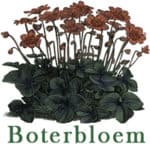 Boterbloem
Boterbloem
This plant is often used as a herb and tastes slightly similar butter. It grows by the side of the road.
Kingsfolly
The story goes that an ancient king believed in a prophecy that his warriors would get invincible if they wore footling simply wreaths of this establish when going into battle. Of course, his army was butchered and the plant was renamed kingsfolly by the enemy who had thought upward the faux prophecy in the commencement place. It grows in forests and fields.
Pheasant's eye
This bulbous plant resembles the eye of a pheasant. Its considered a pest by farmers considering its roots tend to kill other establish life. It is very nutritious but has a rancid sense of taste.
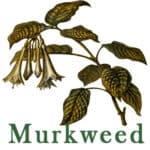 Murkweed
Murkweed
Murkweed grows in bogs, marches and other places generally populated past mosquitoes. If is very resistant to rotting. Layers of murkweed are oftentimes woven into mats and used to construct canoes and huts.
Maidensbliss
Maidensbliss is establish on the slopes of mountains cliffs. Suitors ofttimes run a risk their lives trying to obtain information technology. Beingness presented with a bouquet of maidensbliss is considered a sign of true love and devotion. The found is too the principal ingredient of an intoxicating perfume that goes by the same name and is highly coveted past the upper class.
Hazian
Forbidden in well-nigh lands, hazian is a highly addictive desert establish that has destroyed communities and even countries. It is sought after by diviners for its transcendent properties. At outset information technology enhances the senses and creativity but eventually information technology robs subjects of their desires, leaving them in a lethargic state.
Dueorgeduostle
As well called 'the dwarven plant' Dueorgeduostle avoids sunlight and only grows below the surface or in places of shade. It is an important ingredient in forging dwarven weaponry adding strength and resilience to steel. It also makes for a decent chewing tobacco. Dwarfs won't merchandise this plant for anything.
Widdowleaf
A low dose of widdowleaf leaves its victim temporarily paralyzed, while a highly concentrated dose is frequently lethal. The poisonous substance is tasteless and colourless, but does turn the victims blood majestic. Orillia can counteract the effects of widdowleaf. It grows in graveyards.
Orillia
Orillia is a magical institute which grows in holy natural sites and druid's groves. Its beingness is tied to the nature around it. Picking an Orillia found often leads to the demise of its surrounding nature. It is therefore fiercely protected by druids. Orillia is highly coveted because it is said to cure all ailments.
Skyblossom
Skyblossom is an extremely light magical establish which grows on clouds. Its seeds float on the current of air and never touch earth. It is the patron establish of all that is adept and holy in this globe. It grows on joy, love and selflessness.

White Haleron
White Haleron only appears for one minute when the suns reaches its highest point in the heaven. Predicting where it will appear is notoriously hard, just it is said to appear where justice is washed. Once plucked information technology does non disappear.
Darkroot
This magical institute grows on darkness, pain and death. It is often protected by the undead who seem fatigued to it. Information technology exists between this world and the next, and only appears in our realm shortly where great suffering or expiry have recently taken place. Once plucked it does non disappear. Highly coveted by necromancers, hundreds of souls accept been slain in attempts to obtain this establish.
three. Find the Clues
Players must uncover clues to the recipes. Clues are discovered through:
- Divination.
- Experimentation (uses up ingredients).
- Stealing, bribing or buying clues from other brewers.
- Investigation and research in libraries.
- Treasure.
- Speaking with the dead.
- Or any other means players can think of.
Finding clues can be an run a risk in itself. Yous can grant clues and ingredients as part of treasure. Also consider if y'all want to grant ane clue at a time or speed up the game past offering all the clues to a recipe at once. In that location are usually four to vi clues to each recipe. Players must find the order in which plants go into the cauldron and preparation method for each plant.
An instance of clues to a level one recipe:
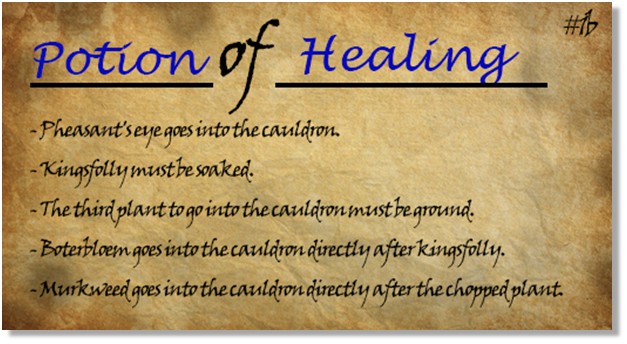
The solution to this recipe is: one soaked kingsfolly, 2 chopped boterbloem, 3 footing murkweed, 4 hobbling pheasant's middle. This ways kingfolly goes into the cauldron kickoff and must be soaked, and then on.
4. Discover the Recipe
Using the clues players tin can create a logic grid that will aid them solve the puzzle. For case, the first clue states that kingsfolly must be soaked, which means you lot tin put a circle (true statement) where 'kingsfolly' and 'soaked' meet on the filigree. It also means that all the other plant are not soaked, and that kingsfolly has no other preparation method. Cross out those options.
Using the clues players can completely fill out the grid.
If players don't know how to create a logic grid you may prove them. Don't let solving a puzzle accept up an unabridged gaming session. Adventuring should revolve around finding clues and ingredients in challenging places.
Equally PCs learn more than recipes over the course of the game, they tin create their ain book of recipes. Yous control the amount of potions players tin can make by decision-making how many ingredients they find.
5. Mash the Potion
If players prepare the potion correctly, it works. Otherwise… let's say potion brewing is a dangerous business. Whatever the results, the ingredients are always consumed.

Creating Your Ain D&D Logic Puzzles
The logic grid used with Potion Puzzles is a little more circuitous than the one used with the on the fly logic puzzles. It uses three categories instead of two, resulting in a more complex logic grid. There are logic grids that accept even more categories. But I would suggest against using those. In my experience, i overeager role player oft makes a mistake with more complex puzzles and the unabridged party gets stuck. Logic puzzles are very unforgiving if you brand a fault.
Much of the fun players take is virtually collecting ingredients and uncovering clues. It's equally much near the apprehension of existence able to solve the puzzle and get a reward, every bit information technology'due south about time spend actually solving the puzzle. (I don't know why, but many D&D players beloved collecting stuff.) And if you use a series of puzzles, instead of simply 1 big puzzle, it doesn't boss the game, while still offering a fun challenge.
Step 1. Make Logic Puzzles a Part of Your D&D World
Consider how you are going to integrate your logic puzzle into the mechanics of the game. Potion Puzzles aren't simply a set up of loose puzzles; they add an entire system for creating magic items. Enquire yourself: What system in your earth utilise an upgrade? Here are some ideas:
- Politics: Apply logic puzzles to determine who tin create an alliance with whom.
- Gateways: Portal that allow PCs to instantly travel beyond the realm are locked by logic puzzles.
- Golems: Ancient giant golems from a lost culture can be activated through solving the logic puzzles on their chest. Together they rebuild a flying ship that will allow PCs to escape this dying world.
However yous choose to integrate the puzzles into the game mechanics, make certain it matters to the players. Something awesome must exist attained by doing all that work. Creating puzzles is A LOT of work. So make sure they are relevant to your globe and to your players' needs.
Step 2. Create the Logic Puzzle
Creating a logic puzzle follows the same steps as creating a puzzle on the fly. You start out with ane statement, make full out the filigree, and so add together more than statements until the unabridged grid is filled out. Next, mix upwardly the order of statements.
Creating multiple logic puzzles for your game is very time consuming, but information technology will make for a much better histrion experience. But y'all don't have to start out with 45 finished puzzles. You tin can create 5 or half dozen to begin with and create new ones as the campaign progresses.
Footstep 3. Playtest Your Logic Puzzles
This – admittedly – is a pain. You lot tin can't playtest puzzles with your D&D group, then you'll have to test them by solving every puzzle by yourself. Information technology'southward actually frustrating for players when they go through all the trouble of searching for clues and ingredients, only to find that the puzzle is flawed. So yes… A LOT of piece of work, simply worth it.
Pace 4. Create the Artwork
If you know how to utilise Photoshop or use other tools for creating artwork, that's great. Simply you can create some actually nice artwork, just by drawing stuff out with a marker and cutting out the pieces. The virtually important thing for players is that they accept physical objects to play around with. So much of D&D uses theatre of the listen. Having a puzzle is a smashing chance to innovate something concrete.
Step 5. Innovate the Logic Puzzle to the D&D Players
Later on all that piece of work, you tin finally nowadays your puzzles to your party. The overnice thing most these types of puzzles is that you tin can use them in sandbox settings and weave them into premade storylines. Besides, you will be giving your players an admittedly unique experience and a much richer campaign globe to explore.
Of course, if all of this sounds like also much work, but you would even so like to introduce logic puzzles into your campaign, Potion Puzzles are available in my webstore. In that location, you can notice lots of other puzzles besides. Each is based on the idea of adding more depth to your overal campaign in some way. For the full collection get the Puzzle Bundle.

Have fun!
Paul Military camp
Sources:
*Baron's logic puzzles
*Potion puzzles roll20
Source: https://dungeonvault.com/dnd-logic-puzzles-an-easy-step-by-step-guide/
Posted by: mayerwhishis1967.blogspot.com

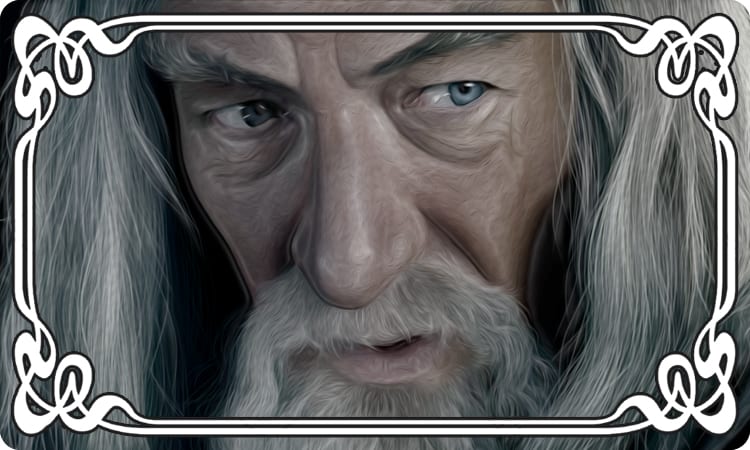

0 Response to "How To Draw A Logic Puzzle Grid"
Post a Comment